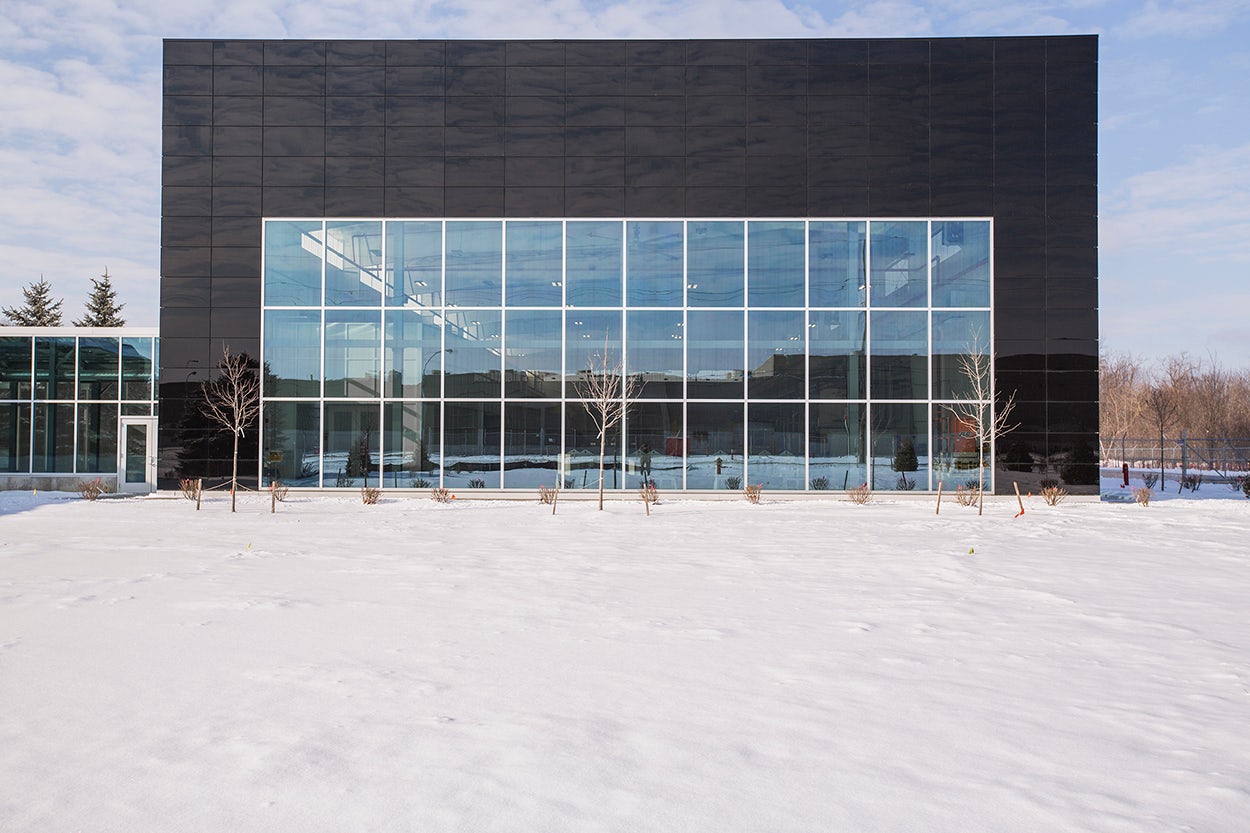A crucial environmental factor that affects people, daylighting is more than a tool for beautifying spaces or reducing energy use. Scientific research indicates that its use strongly correlates with improved human health and performance.* As a result, today’s building developers and owners do not consider natural light an amenity; instead, they have embraced it as a necessity.
In recent years, glass manufacturers have been asked to respond to the needs of owners and architects to provide new and higher-performing glass and glazing products that also suit a range of design trends.
From new construction to retrofits, each project’s optimal glazing selection depends on matching the particular requirements for performance and aesthetics with the combination of features provided by each glazing type. Today’s high-performance products offer various strategic levels of visible light transmittance while managing solar heat gain.

Battle Creek Area Mathematics and Science Center; photo by Justin Maconochi
For example, when the Battle Creek Area Mathematics and Science Center (BCAMSC) outgrew its previous facility, a community partnership selected the former Kellogg Cereal City Museum as the site for a new facility. For this retrofit project, TowerPinkster Architects was tasked with designing a building that incorporated innovation, flexibility, advanced technology, natural daylighting and, most importantly, areas conducive to inspire students and support the BCAMSC’s mantra of “Innovation through Inspiration.”
“The glass selection played a very important role in helping us achieve our design goals,” says Matt Slagle, senior design architect with TowerPinkster. “Its neutral appearance allows for the seamless transition from the building’s original form to a state-of-the-art school.”
A large, cantilevered glass curtain wall — using Guardian SunGuard® SNR 43 on CrystalGray® glass — invites visitors into the building. The glazing’s 31 percent visible light transmission (VLT) and ultra-low 0.20 solar heat gain coefficient made it an ideal choice for the “greenhouse” part of the project. On the building’s second floor, the greenhouse floats over the entry plaza and showcases the center’s commitment to research-based learning and innovation, Slagle says. For the perimeter of the building, he specified Guardian SunGuard SuperNeutral® 68 glass.
“The glass allows the building to capture and penetrate natural light into the school, providing valuable daylight to the students while helping to manage energy use,” he explains.

© Greg Benson
The Krishna P. Singh Center for Nanotechnology is a state-of-the-art facility featuring Guardian SunGuard® AG 50 coating on UltraWhite glass to create daylight-filled laboratories and public spaces. Photo by Greg Benson Photography
SunGuard SuperNeutral 68 delivers a high, 68 percent VLT and has a solar heat gain coefficient of 0.38. By providing a range of visible light transmission and optimal thermal performance, SunGuard glass helps the facility’s HVAC system better manage energy performance, as well as provide comfort and all the benefits of natural light to the students and other building occupants.
By featuring two different high-performance glazings, the BCAMSC project demonstrates the ease of evaluating and applying some of the different types of glass that are available today. In addition to providing a wide range of coatings to manage energy performance and facilitate a variety of aesthetic objectives, glass can be clear, tinted or bent; and of differing thicknesses.


Featuring Guardian SunGuard® AG 50 coating on clear glass and perfectly positioned to capitalize on breathtaking views of the mountains, natural light pours into a glazed, two-story lobby, as well as the floor-to-ceiling windows on the perimeter. Photos by Peter Eckert.
As glass options have increased, so has the number of tools to help architects research these options. Guardian Glass Analytics, a suite of web-based tools, helps architects explore aesthetic and functional possibilities of building with light while meeting complex energy, daylighting and sustainability requirements. The design team can customize with the Performance Calculator, visualize with Guardian’s Glass Visualizer, analyze using the Building Energy Calculator and design using Guardian’s BIM Generator.

Guardian Science & Technology Center, incorporating the company’s SunGuard® SNX 51/23 coating on clear glass and Spandrel HT, takes advantage of the multiple visual and performance attributes of available glass products. Photo by Ara Howrani
Daylighting design represents the intersection of two primary concerns for architects: the owner’s operational needs and the occupants’ experience. Understanding and implementing the available resources helps architects create buildings that are better designed, more appealing to occupants and the surrounding community — and more cost effective to operate.
* The Benefits of Glass, The University of Michigan Taubman College of Architecture and Urban Planning, 2012, Guardian Industries Corp.









